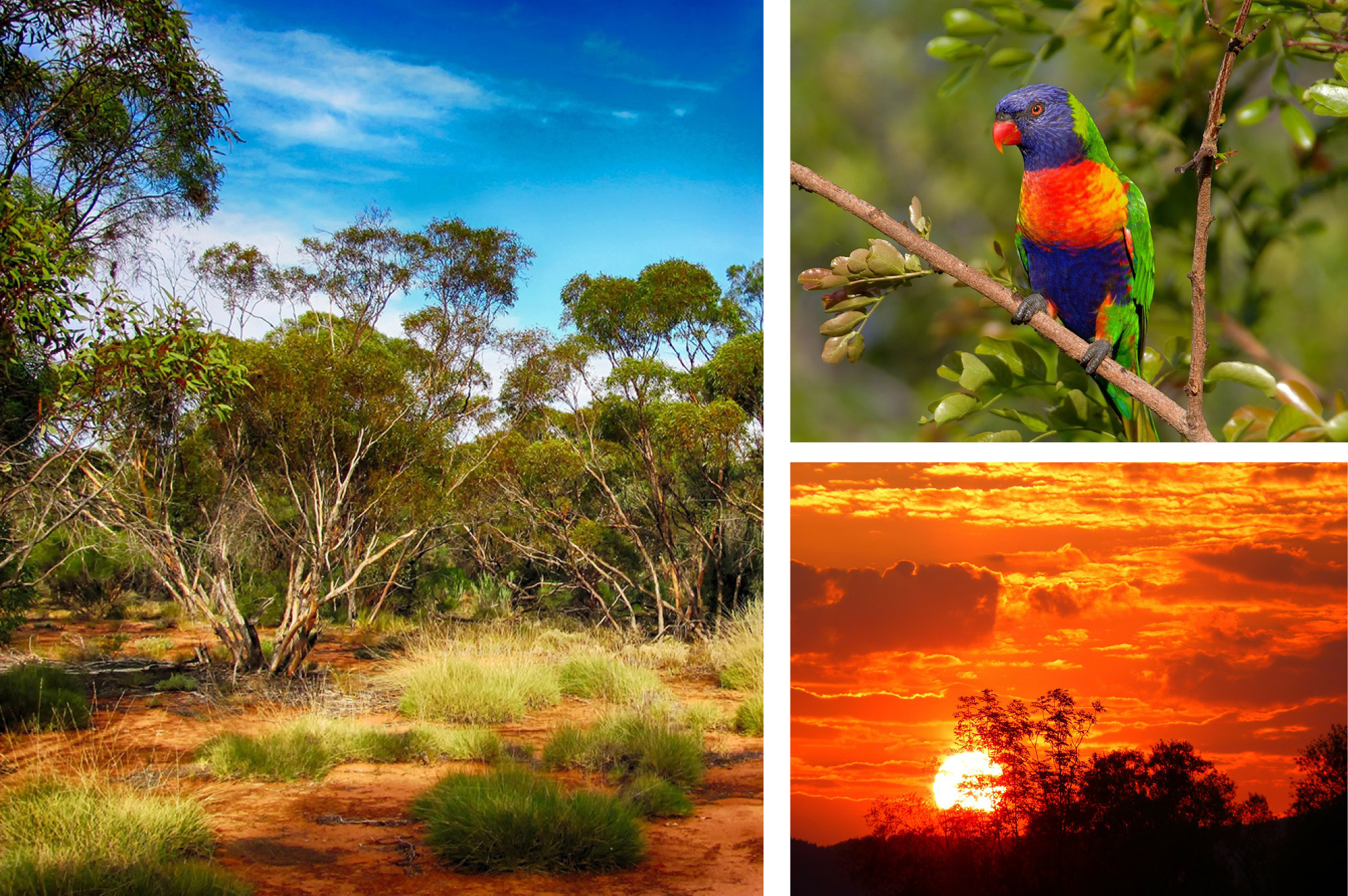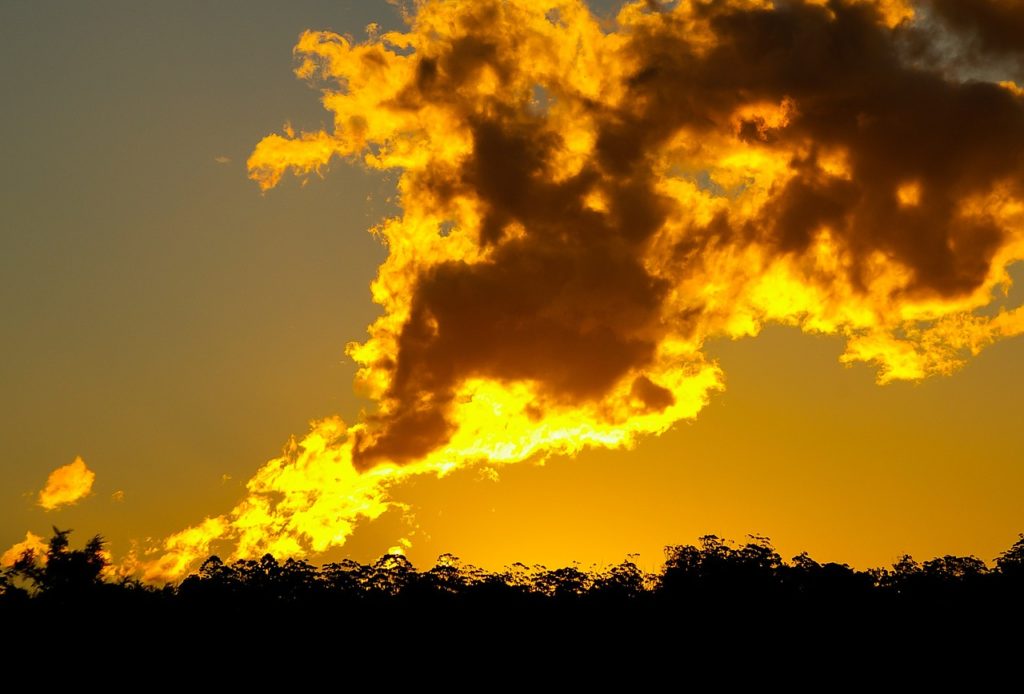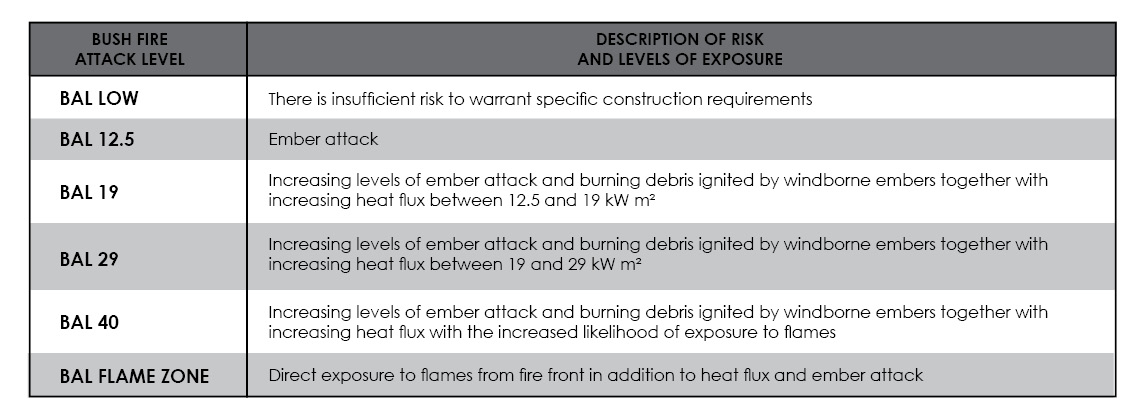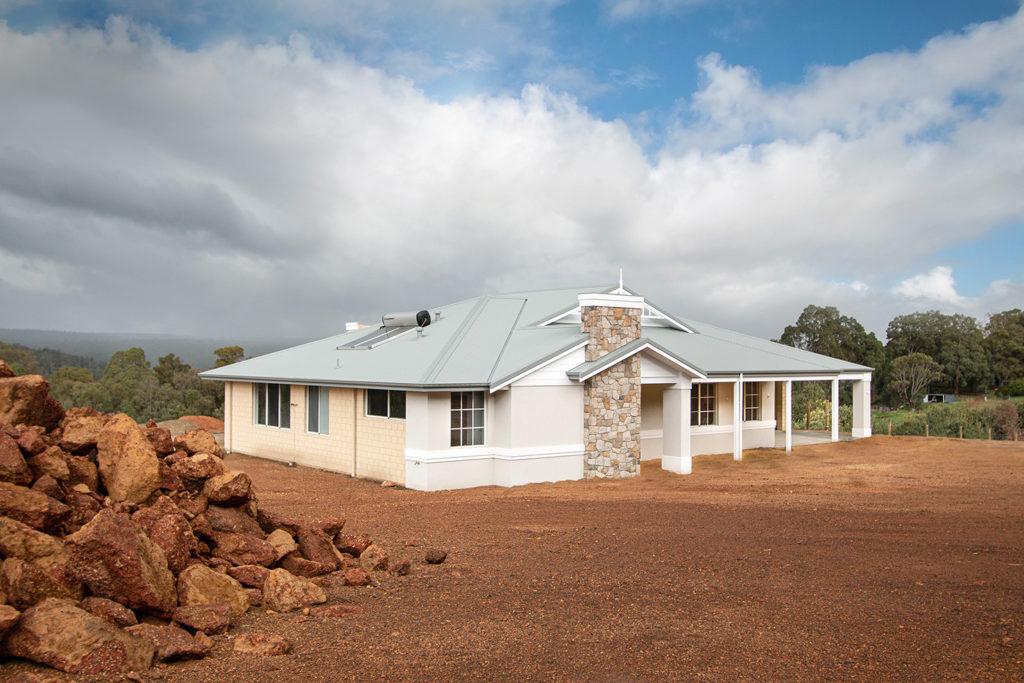Bush Fire Attack Levels – what you need to know

Your guide to Bush Fire Attack Levels.
Western Australia’s gloriously temperate climate is one of our State’s major attractions, however it also means we experience some of the driest climatic conditions in the country and are therefore prone to bush fires.
Since the early 1990s, it has been mandatory for all new homes constructed in areas identified by our State Government as being bush fire prone, to comply with enhanced building standards under the Australian Building Code. Accordingly, if your property is located within 100 metres of more than one hectare of bushland, it must be independently assessed to determine the “Bushfire Attack Level” or BAL before we can apply for your building permit.
Establishing the risk of fire to your home
The BAL is a measurement of the property’s potential exposure to ember attack, radiant heat and direct flame contact in the event of a bush fire. It is also the basis for establishing the building requirements that will improve your home’s ability to better survive a fire, which gives a measure of protection to the people inside as well as to the building itself.
The BAL takes into consideration a number of factors including the Fire Danger Index (which measures the probability of a bushfire starting, its intensity, rate of spread, and difficulty of suppression), the slope of the land (bush fires have a tendency to move uphill more rapidly than downhill), the type of vegetation surrounding your home and its proximity to your home, garage, carport, shed and/or deck.

The BAL establishes the building requirements that will improve your home’s ability to better survive a fire
Bush fire Attack Level (BAL)
There are six levels of exposure to bush fire attack (ranging from Low to Flame Zone):

Bushfire Attack level Ratings
Construction considerations for bush fire-prone areas
Under Australian Standard 3959-2009 “Construction of Buildings in Bush Fire-Prone Areas”, there are a number of special construction considerations that can be incorporated at the design development stage to defend your home from the risk of bush fire attack:
• including non-combustible sub-floor supports made from fire resistant aluminium or steel
• protecting your concrete slab with non-combustible fibre cement sheeting
• using fire resistant materials to build external walls, and installing sarking or wall wrap behind non-combustible wall sheeting
• including toughened glass to external windows, affixing steel or aluminium fly screens and adding bush fire shutters where the risk is extreme
• incorporating solid core metal (not timber) framed, fire-rated doors with weather seals, and screening them with steel or aluminium mesh
• using a non-combustible, fully sarked roof covering and sealing all roof/wall junctions
• fitting non-combustible ember guards to gutters
• no roof-mounted evaporative air coolers
• using only non-combustible materials to build verandahs and decks.

There are special building design considerations for homes in bushfire-prone areas such as the Perth hills
Cost-effective solutions
Building in a bush fire prone zone introduces a number of additional design, specification and construction parameters that cannot be ignored. While these additional requirements can add extra costs to construction, they are imperative for saving lives. With a total of 71 homes destroyed in the 2011 Roleystone bush fires, and more than 80 homes lost in a blaze in the Wooroloo area earlier this year, these measures could make a difference to how severely your home is affected by a bush fire.
Of course while constructing your home in accordance with AS 3959 can improve its ability to withstand bush fire attack, it is important to note that is does not guarantee a building will survive due to the unpredictable and often devastating nature of bush fire.
For further information about the home building process, contact us today.
